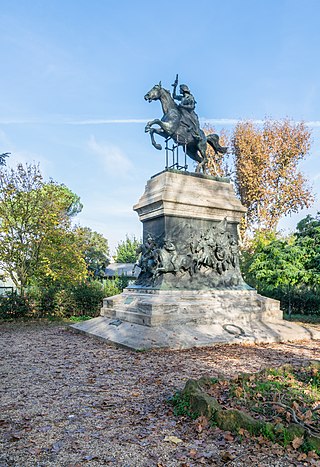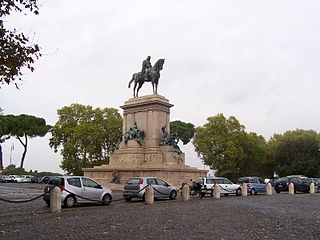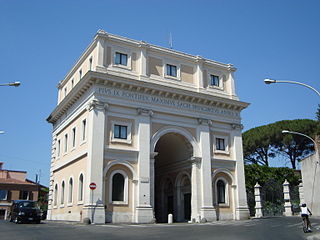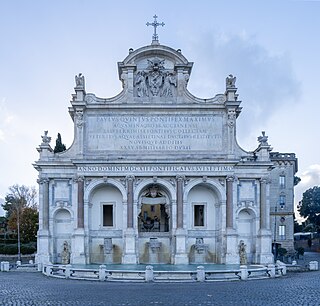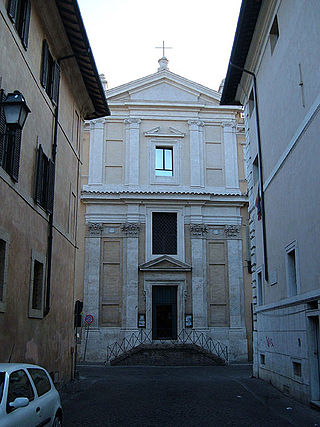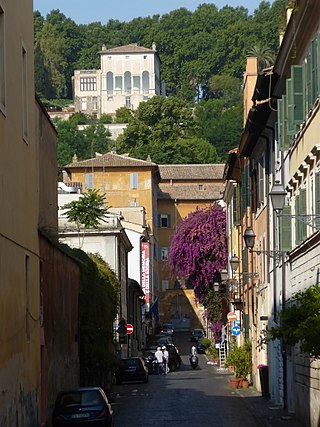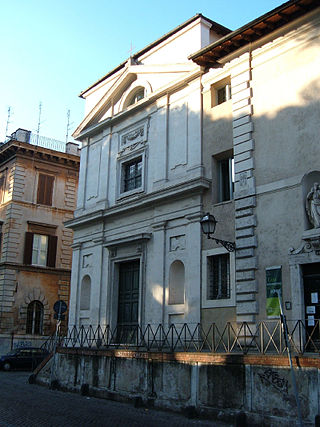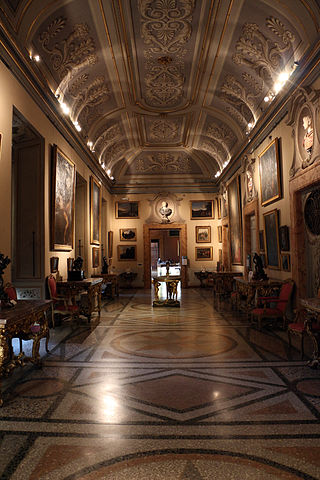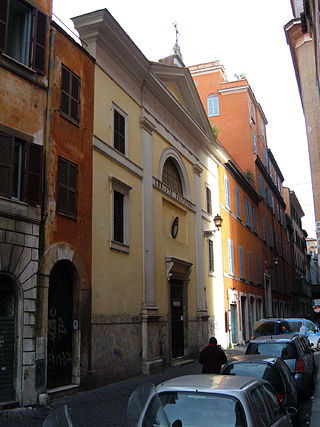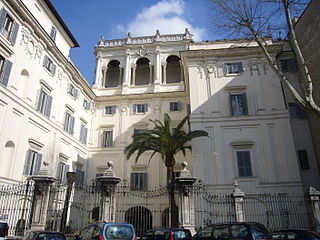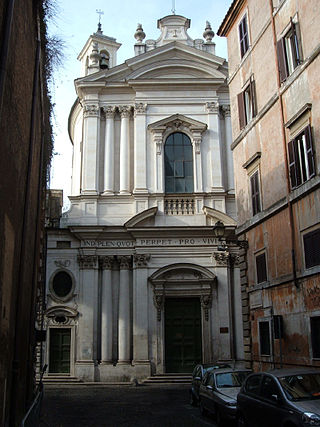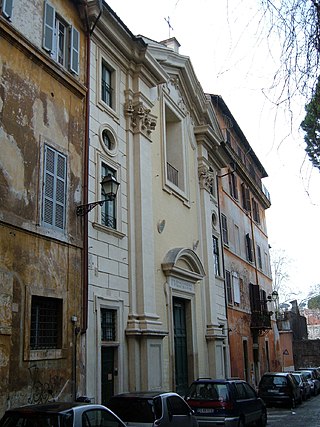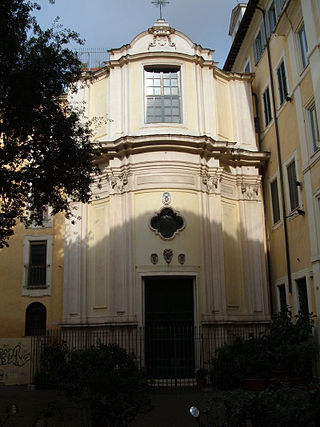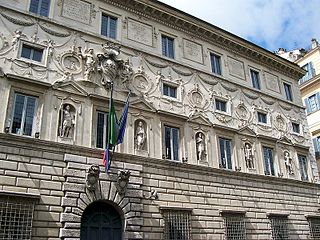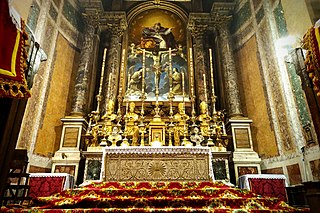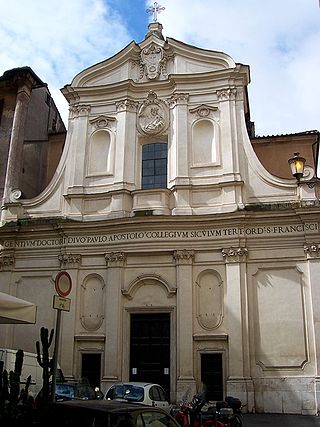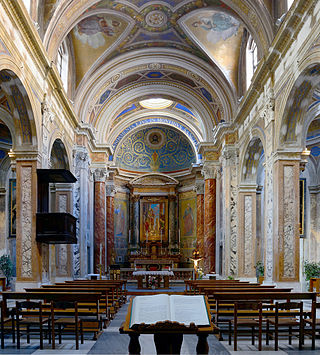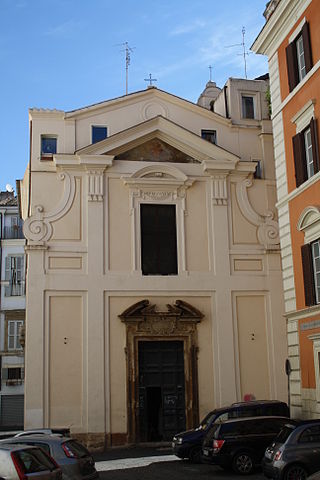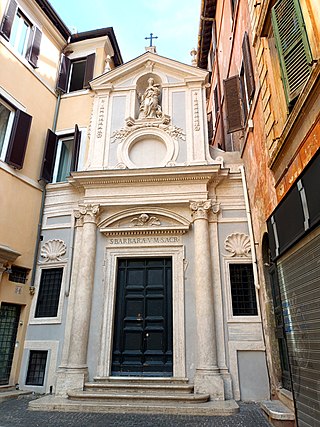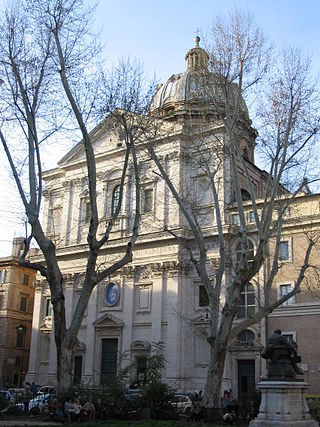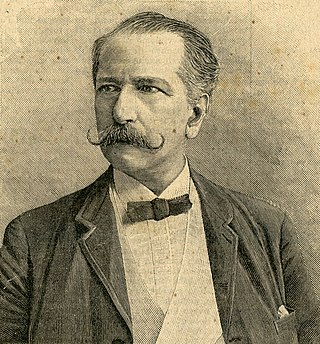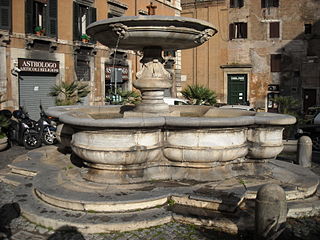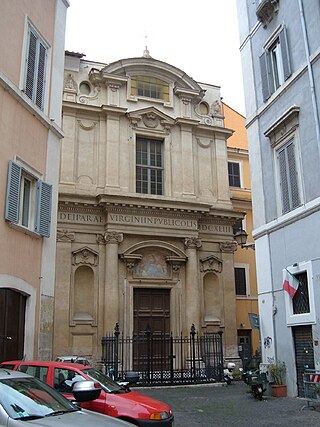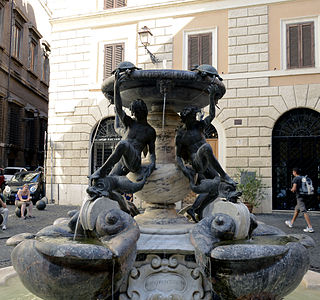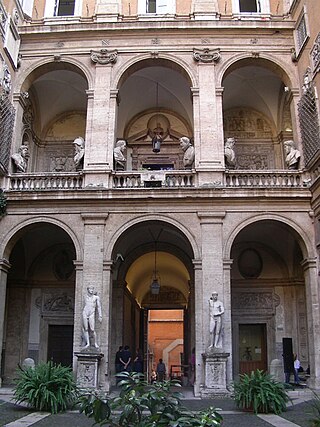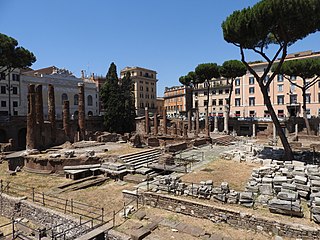Self-guided Sightseeing Tour #4 in Rome, Italy
Legend
Guided Free Walking Tours
Book free guided walking tours in Rome.
Guided Sightseeing Tours
Book guided sightseeing tours and activities in Rome.
Tour Facts
5.9 km
152 m
Experience Rome in Italy in a whole new way with our free self-guided sightseeing tour. This site not only offers you practical information and insider tips, but also a rich variety of activities and sights you shouldn't miss. Whether you love art and culture, want to explore historical sites or simply want to experience the vibrant atmosphere of a lively city - you'll find everything you need for your personal adventure here.
Activities in RomeIndividual Sights in RomeSight 1: Monumento ad Anita Garibaldi
The monument to Anita Garibaldi is a large equestrian statue installed on the Janiculum Hill.
Sight 2: Monumento a Garibaldi
The monument to Giuseppe Garibaldi is an imposing equestrian statue, which is sited on the highest point of the Janiculum hill in Piazza Garibaldi.
Sight 3: Museo della Repubblica Romana e della memoria garibaldina
The Museum of the Roman Republic and Garibaldi's memory is part of the Museums in the municipality and is located off Porta San Pancrazio in the Trastevere district of Rome.
Wikipedia: Museo della Repubblica Romana e della memoria garibaldina (IT), Website
Sight 4: Fontana Dell'Acqua Paola
The Fontana dell'Acqua Paola, also known as Il Fontanone or Mostra dell'Acqua Paola, is a monumental fountain located on the Janiculum Hill, near the church of San Pietro in Montorio, in Rome, Italy. It was built in 1612 to mark the end of the Acqua Paola aqueduct, restored by Pope Paul V, and took its name from him. It was the first major fountain on the right bank of the River Tiber.
Sight 5: San Giacomo alla Lungara
San Giacomo alla Lungara is a church in Rome (Italy), in the Rione Trastevere, facing on Via della Lungara. It is also called San Giacomo in Settimiano or in Settignano, due to its vicinity to Porta Settimiana, built by Septimius Severus and included by Aurelianus within the city walls.
Sight 6: Chiesa del Sacro Cuore di Gesù a Villa Lante
The Church of the Sacred Heart of Jesus in Villa Lante is a church in Rome, in the Trastevere district, in via San Francesco di Sales, 18, inside Villa Lante.
Wikipedia: Chiesa del Sacro Cuore di Gesù a Villa Lante (IT)
Sight 7: Santa Maria del Ritiro al Gianicolo
Santa Maria del Ritiro al Gianicolo or Church of Our Lady of the Retreat on the Janiculum is a church in Rome, Italy, located in the rione Trastevere, in via di San Francesco di Sales. It is dedicated to Our Lady and is part of the parish of Santa Dorotea.
Sight 8: Santa Croce alla Lungara
Santa Croce alla Lungara is a church in Rome (Italy), in the Rione Trastevere, facing on Via della Lungara. It is also called Santa Croce delle Scalette', due to the presence of a double flight of stairs giving access from the street; or Buon Pastore, since in the 19th century the church and the annexed cloister were entrusted to the Sisters of the Good Shepherd of Angers.
Sight 9: Villa Farnesina
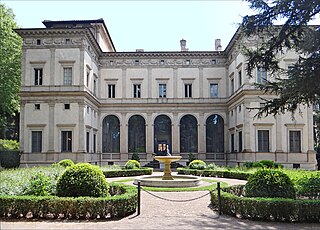
The Villa Farnesina is a Renaissance suburban villa in the Via della Lungara, in the district of Trastevere in Rome, central Italy. Built between 1506 and 1510 for Agostino Chigi, the Pope's wealthy Sienese banker, it was a novel type of suburban villa, subsidiary to his main Palazzo Chigi in the city. It is especially famous for the rich frescos by Raphael and other High Renaissance artists that remain in situ.
Sight 10: Galleria nazionale d'arte antica di palazzo Corsini
The National Gallery of Ancient Art of Palazzo Corsini is an art museum in Rome, Italy, housed in the Palazzo Corsini alla Lungara, in the Trastevere district. The museum, part of the collection of the National Gallery of Ancient Art, preserves a nucleus of fine works, mostly of Italian and Flemish painting between the sixteenth and seventeenth centuries.
Wikipedia: Galleria nazionale d'arte antica di palazzo Corsini (IT), Website
Sight 11: Chiesa di San Salvatore in Onda
San Salvatore in Onda is a Roman Catholic church, located on via dei Pettinari #56-58, in rione Regola of Rome, Italy. The church is about a block southwest along the via from the church of Santissima Trinità dei Pellegrini.
Sight 12: Palazzo Falconieri
The Palazzo Falconieri is a palace in Rome, Italy formed in the seventeenth century as a result of remodelling by the Baroque architect Francesco Borromini. It is the home of the Hungarian Academy Rome, since its foundation in 1927. It is located between Via Giulia and Lungotevere, with entrances to both; it is near Palazzo Farnese and a few houses down and across Via Giulia from the church of Santa Caterina della Rota in the Rione of Regola. From 1814, it was occupied by cardinal Joseph Fesch, Napoleon's uncle.
Sight 13: Chiesa di Santa Maria dell'Orazione e Morte
Santa Maria dell'Orazione e Morte is a church in central Rome, Italy. It lies on Via Giulia between the Tiber and the Palazzo Farnese.
Sight 14: Santi Giovanni Evangelista e Petronio dei Bolognesi
Santi Giovanni e Petronio dei Bolognesi is a Roman Catholic church in central Rome, Italy. It is named after the Saints John the Evangelist and Petronius, who are patrons of the city of Bologna. This church was made the "national church" of the Bolognese in Rome in 1581, by order of Pope Gregory XIII. It is located in the Rione of Regola, on Via del Mascherone, across the street and just south of the Gardens behind the Palazzo Farnese. It is today the "regional church" of Emilia-Romagna.
Sight 15: Chiesa di Santa Maria della Quercia
Santa Maria della Quercia is a Roman Catholic church located on the piazza of the same name, one block southeast of the Palazzo Farnese in the Rione (district) of Regola of central Rome, Italy.
Sight 16: Galleria Spada
The Galleria Spada is a museum in Rome, which is housed in the Palazzo Spada on Piazza Capo di Ferro. The palazzo is also famous for its façade and for the forced perspective gallery by Francesco Borromini.
Sight 17: Santissima Trinità dei Pellegrini ai Catinari
The Chiesa della Santissima Trinità dei Pellegrini is a Roman Catholic church located on Via dei Pettinari #36 In the rione of Regola of central Rome, Italy. It stands a block away from the Palazzo Spada on Via Capo di Ferro, while a few blocks away on the Via dei Pettinari stands the Ponte Sisto.
Wikipedia: Santissima Trinità dei Pellegrini, Rome (EN), Website
Sight 18: Chiesa di San Paolo alla Regola
San Paolo alla Regola, a church in the Regola area of Rome, was made a cardinalate deaconry by Pope Pius XII in 1946. Its present Cardinal-Deacon, since 21 November 2010, is Francesco Monterisi, archpriest emeritus of the Basilica of Saint Paul Outside the Walls.
Sight 19: Chiesa di Santa Maria in Monticelli
Santa Maria in Monticelli is a church in the rione of Regola in Rome, sited on the street of the same name. A church was founded at the site in the 12th century and reconsecrated by Innocent II in 1143. It was known as Sancta Maria in Monticellis Arenulae de Urbe, in a bull by Urban IV in 1264. Little remains of the medieval church, except for the bell-tower. The church was entirely reconstructed in 1716 by Matteo Sassi, on a commission by Clement XI, and in 1860 by Francesco Azzurri. The church is the home to the Curia Generalizia dei Padri Dottrinari.
Sight 20: Chiesa di San Salvatore in Campo
San Salvatore in Campo is a Roman Catholic church located on the small piazza of the same name, not far from the church of Santissima Trinità dei Pellegrini, in the Rione (district) of Regola of central Rome, Italy.
Sight 21: Santa Barbara dei Librai
Santa Barbara dei Librai is a small Roman Catholic church in Rome, Italy. It was once known as Santa Barbara alla Regola after the rione in which it was located. Today it now considered within the rione of Parione, near the Campo de' Fiori.
Sight 22: Santi Biagio e Carlo ai Catinari
San Carlo ai Catinari, also called Santi Biagio e Carlo ai Catinari, is an early-Baroque style church in Rome, Italy. It is located on Piazza Benedetto Cairoli, 117 just off the corner of Via Arenula and Via dei Falegnami, a few blocks south of the church of Sant'Andrea della Valle.
Sight 23: Federico Seismit Doda
Federico Seismit-Doda (1825–1893) was a Dalmatian Italian politician who gained prominence during the Revolutions of 1848 in the Italian states.
Sight 24: Santa Maria del Pianto ai Catinari
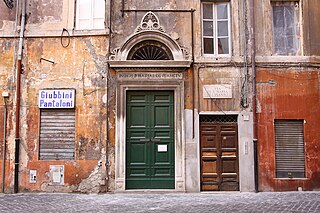
Santa Maria del Pianto is a Roman Catholic church in the Rione Regola, with entrances on the South at Piazza delle Cinque Scole/ Via di Santa Maria de' Calderari and on the north on Via di Santa Maria del Pianto. It is presently affiliated with Oblates of the Virgin Mary.
Sight 25: Fontana di piazza delle Cinque Scole
The Fontana del Pianto, also known as the Fontana di piazza delle Cinque Scole, is a monumental fountain located in the Piazza delle Cinque Scole in the rione of Regola in Rome.
Sight 26: Chiesa di Santa Maria in Publicolis
Santa Maria in Publicolis is a Baroque church in Rome. It is located in the rione of Sant'Eustachio. The facade was designed by Giovan Antonio de' Rossi.
Sight 27: Turtle Fountain
The Fontana delle Tartarughe is a fountain of the late Italian Renaissance, located in Piazza Mattei, in the Sant'Angelo district of Rome, Italy. It was built between 1580 and 1588 by the architect Giacomo della Porta and the sculptor Taddeo Landini. The bronze turtles around the upper basin, usually attributed either to Gian Lorenzo Bernini or Andrea Sacchi, were added in either 1658 or 1659 when the fountain was restored.
Sight 28: Palazzo Mattei di Giove
The Palazzo Mattei di Giove is the most prominent among a group of Mattei houses that forms the insula Mattei in Rome, Italy, a block of buildings of many epochs.
Sight 29: Area sacra dell'Argentina
Largo di Torre Argentina is a large open space in Rome, Italy, with four Roman Republican temples and the remains of Pompey's Theatre. It is in the ancient Campus Martius.
Share
How likely are you to recommend us?
Disclaimer Please be aware of your surroundings and do not enter private property. We are not liable for any damages that occur during the tours.
GPX-Download For navigation apps and GPS devices you can download the tour as a GPX file.
